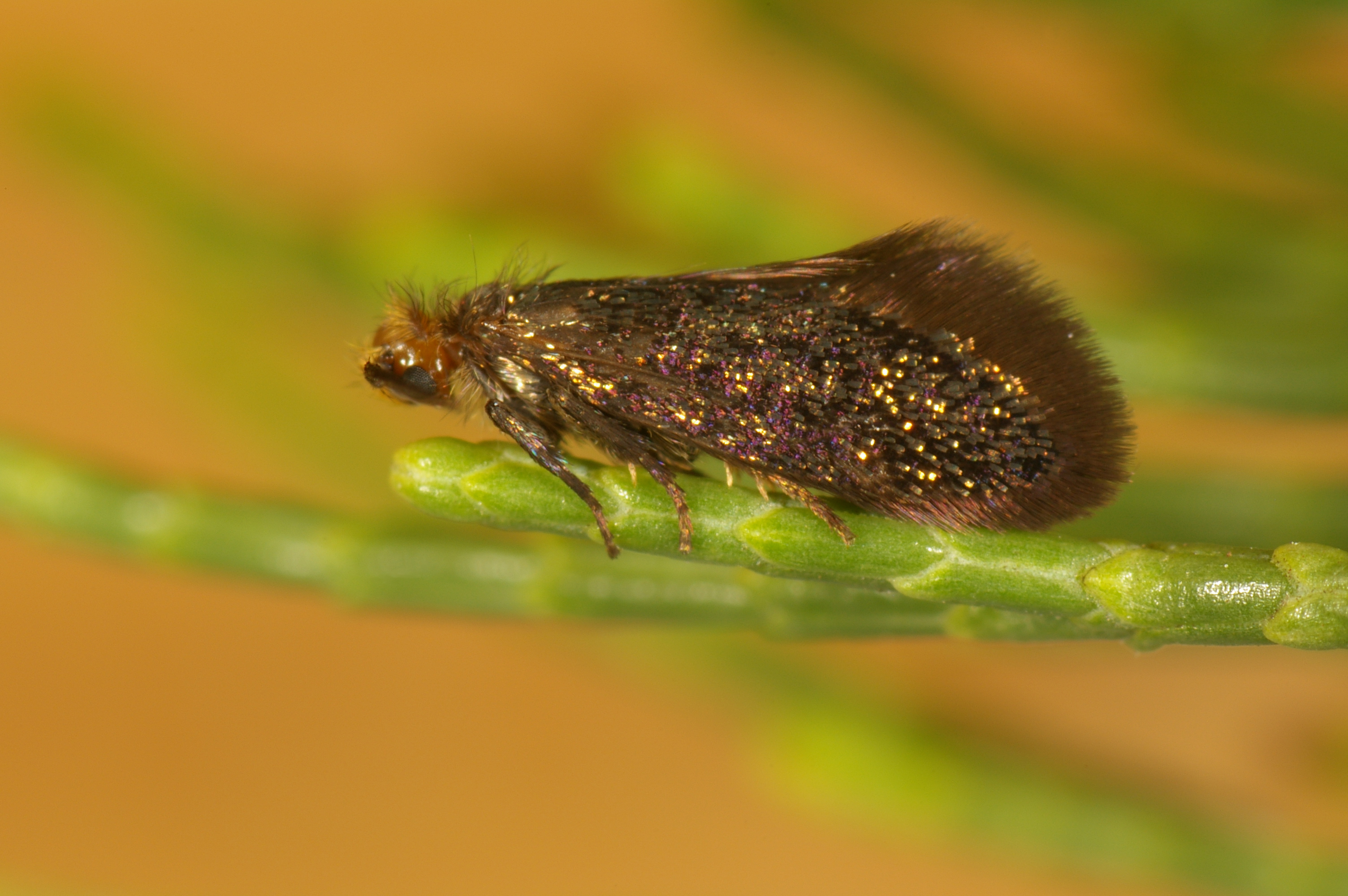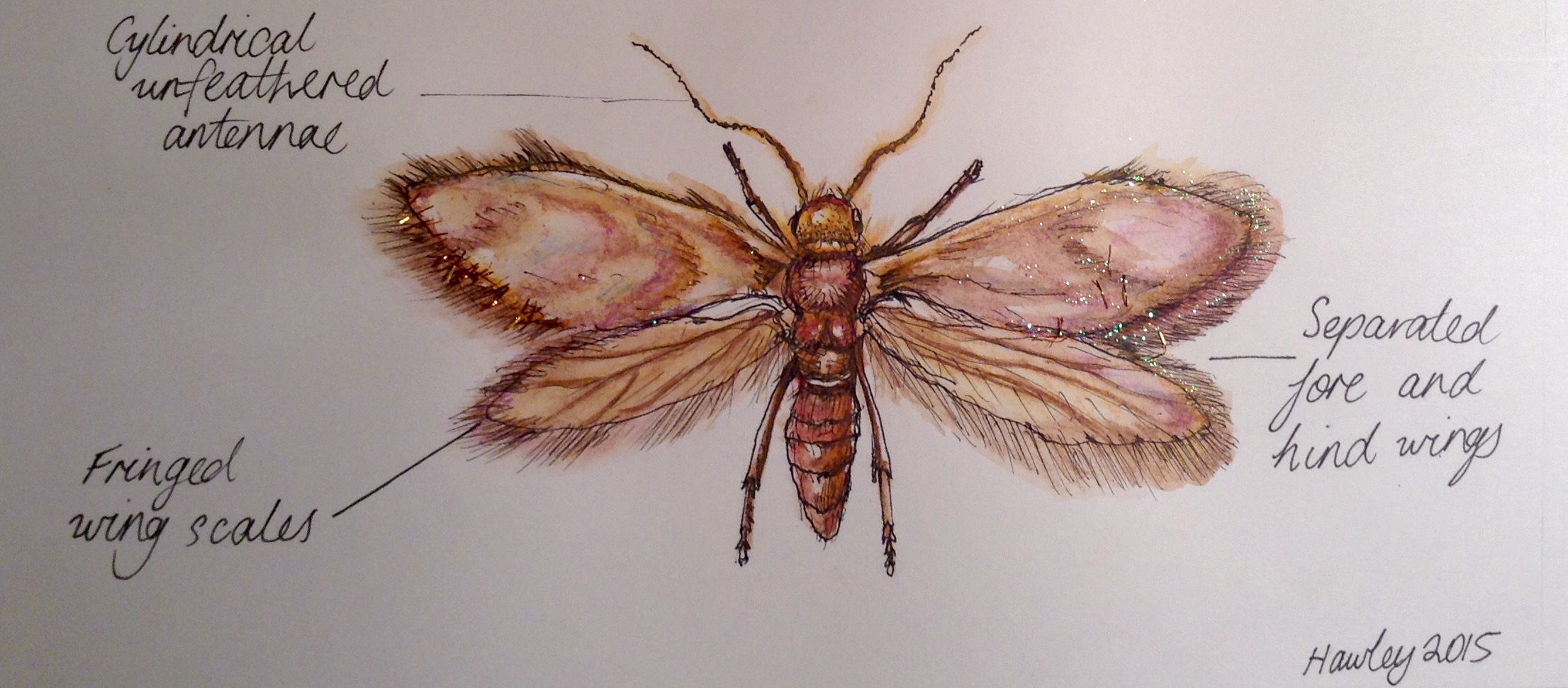A female adult ‘enigma’ moth on a Southern Cypress-pine stem. Note the beautiful colouring of its wings. Image: George Gibbs
A living dinosaur. A missing evolutionary link. A specimen unlike any seen before it.
With such weighty words being thrown around, you could be forgiven for thinking we had discovered a Yowie, a Loch Ness Monster, or another Jurassic Park script. But the truth, while being a little more unassuming, is no less the stuff of legends.
In actual fact, we’ve found an enigma.
Today, we unveiled the Aenigmatinea glatzella – which has been coined the ‘enigma moth’ – to the world. This tiny insect, which has so far only been found in an isolated pocket of Kangaroo Island, South Australia, represents not just an entire new species of moth, but an entire new family. It’s the Lepidoptera equivalent of discovering, say, the platypus.
This is the first time since the 1970s that a new family of primitive moths has been identified anywhere in the world. So for a bald bug that lives, mates and dies in one day and could fit on a five cent piece, the enigma moth is causing quite a stir.
An illustration of the dorsal side of the moth.
You can read more about the moth and our role in its discovery – as well as the launch of a foundation to support research into Australian moths and butterflies, and the moths and butterflies in our Australian National Insect Collection in Canberra – here. But in the meantime, we present to you the top five facts about this flying enigma:
- It is helping us crack evolution’s code. DNA analysis indicates that the evolution of moths and butterflies is even more complex than previously thought. For example, while the discovery of this new moth strengthens the evolutionary relationships between other primitive moth families, it also suggests that tongues evolved in moths and butterflies more than once.
- The species name glatzella has an amusing double meaning. While bestowed in honour of its discoverer, Dr Richard Glatz, in German glatze means ‘bald head’. Indeed, this cryptic moth is bald – it hardly has any scales on its head. But elsewhere on the body, these scales appear as a brilliant purple and gold.
- It’s rare. It has so far only been found at one location on Kangaroo Island off the coast of South Australia.
- It lives on Southern Cypress-pine trees (Callitris gracilis), a very ancient element of our flora dating back to the supercontinent Gondwana.
- The adult moths are short-lived. In just one day they emerge from their cocoons, mate, females lay their eggs, and then die.
And, in case you haven’t seen it already, we’ve created this excellent short film of the enigma moth to honour its official introduction to the public. Enjoy!



